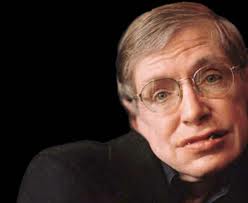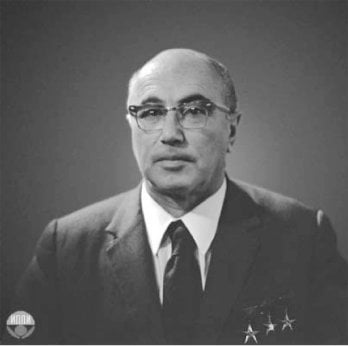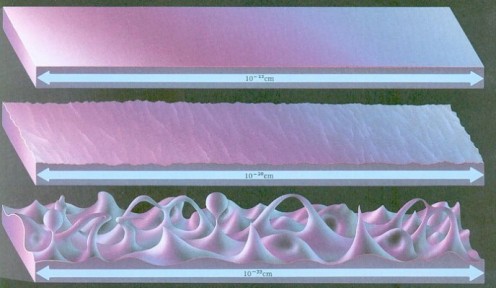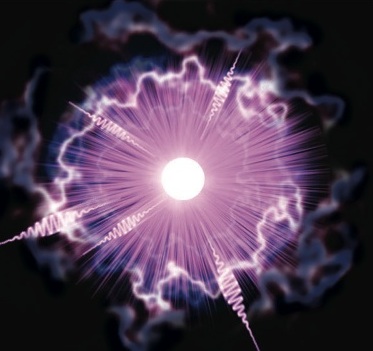Hawking Radiation and Evaporating Black Holes
Hawking Radiation: An Unsolved Mystery of Black Holes
Black holes are not completely black! Or at least according to Stephen Hawking and several others who believe that black holes can actually radiate particles that can be detected as thermal radiation and lead to evaporating black holes. The theory behind this radiation, which has come to be aptly known as Hawking radiation, was initially developed in the 1970s and to this today remains an unsolved mystery for the theoretical physics community. This is partly due to the fact that while radiating black holes are theoretically plausible, no direct observation of Hawking radiation has been made over the four decades since its conception.


Origins: Zel'dovich to Hawking
The first idea that black holes can actually radiate came from Yakov Zel'dovich in June of 1971. Zel'dovich's reasoning came from the assumption that "a spinning metal sphere emits radiation, and so, similarly spinning black holes should emit gravitational waves." Through this analogy Zel'dovich believed that spinning black holes must radiate, that this radiation would interact with the black holes, and eventually slow the spin of the holes to a halt.
All previous studies of black holes were based on Einstein's theory of general relativity. These studies said that black holes cannot radiate. However, theorists working during the time that the idea of black hole radiation came about knew that general relativity was only an approximation to the 'true' laws of gravity. To fine a 'true' theory of gravity quantum mechanics was needed; thus, the search began for a theory of 'quantum gravity': a full marriage between quantum mechanics and general relativity.
While in Moscow in 1973, Stephen Hawking was first introduced to Zel'dovich's idea that spinning black holes should radiate. Zel'dovich and his graduate student visited Hawking several times during his stay in Moscow and described to him their partial unification of quantum mechanics and general relativity and went on to develop a proof in support of black hole radiation based on their theory. This subject greatly interested Hawking and upon returning to his home in England he began to develop his own partial marriage and used it to test out Zel'dovich's predictions. Simultaneously in the United States, several other physicists were also attempting to confirm Zel'dovich's hypothesis and had tentatively done so when Hawking came forth with an at-the-time outrageous postulation. Hawking's calculations had indeed confirmed that spinning black holes must radiate and their spin would in turn slow. However, Hawking went further to say that when a black hole stops spinning it does not stop radiating! In fact, with no spin or spin energy left the hole continues to radiate emission of all types and thus continues to lose energy. Since the hole is not spinning the loss of energy cannot be lost from spin energy; therefore, it can only be losing energy from inside the hole. Hawking also calculated that the black hole's radiation exhibited behavior exactly like the thermal radiation spectrum. Therefore, the horizon of the black hole had a finite temperature and that temperature was proportional to the hole's surface gravity. And on top of all this, Hawking's calculation said one more thing about black holes - as they continue to emit radiation and energy (and thus mass) after their spin has stopped, their area and entropy decrease and their temperature and surface gravity increase. Essentially, the hole shrinks and becomes hotter and is said to be an evaporating black hole.
Virtual Particles
The computation behind Hawking radiation is quite involved; therefore, an explanation of the conceptual properties of the radiation and black hole evaporation will suffice for this level of detail. We begin with the introduction of quantum mechanics using the Heisenberg uncertainty principle. The basis of Hawking Radiation lies in what is called vacuum fluctuations. To a casual observer, the vacuum of space appears to be just that, a void with no particles or activity. However, through the lens of quantum mechanics, the vacuum of space appears as a boiling sea. Using the uncertainty principle we can see that if interested in finding a specific energy a long time interval is needed and, conversely, if limited to a short time interval we are left with a wide range of values for the possible energy of the given system. Relating this to vacuum fluctuations, this means that when observing any specific locale within the vacuum there exists a significantly wide variety of energies the 'vacuum' can have (this time in quotes because we know the vacuum is not really a vacuum). Due to this variation in energy, it is possible for random pairs of particles and antiparticles to pop up anywhere at any time. They can be thought of as momentarily borrowing energy from another region of space to be created and then once they annihilate each other that borrowed energy is restored. While the notion of borrowing energy is not quite exactly correct, it adequately represents the conceptual picture of the creation of particle-antiparticle pairs. The creation of the pair is actually based on probability; therefore, it is difficult to say that the particles physically take energy from somewhere else because it is unknown where exactly the particles exist or from where they would borrow. Because the particles are based only on probability they are known as virtual particles . This leads to the notion that at all times throughout the Universe, the vacuum of space is seething with particle-antiparticle pairs that pop up for a short period of time, annihilate each other, and then their energy is returned back to the vacuum. It is of note that these virtual particles can be of any kind, it just takes increasing energy to create real particles as the mass of virtual particles increases.

Escaping Black Holes
Vacuum fluctuations are the basis for Hawking radiation when the virtual pair pops up in the vicinity of a black hole event horizon. Since the pairs can arise at any location at any time it is natural to assume that they should be found here as well. However, it is at this point that the conceptual view of Hawking radiation gets a bit tricky.
When the particle-antiparticle pair forms at the horizon, the conditions must be exactly right. In fact, for Hawking radiation to occur, one particle of the pair must be located on the outside of the event horizon, while the other particle of the pair must lie within the hole itself! This happens by chance alone, but due to the extremely large amount of times that virtual particles occur in the vacuum it is theoretically possible for them to occur frequently in this exact situation. Immediately after the virtual particles form, the black hole's tidal gravity begins to act on them, pulling them away from each other. At a certain distance away from each other, the particles will separate and one will be pulled into the black hole never to return, while the other escapes the hole completely. This process is rather obscure, yet it is still widely accepted as a conceptual way to make sense of Hawking radiation. (While Hawking's original derivations involved 'particles propagating into the black hole', there are derivations by other authors that completely avoid the introduction of particles around the black hole. For now, we will forgo discussion of these derivations and take for granted the ambiguity in how a particle escapes the black hole horizon.)

Evaporating Black Holes
As the particle leaves the event horizon it receives enough energy from the hole to become a real particle. As this now real particle escapes from the space-time region of the black hole it leaves with some amount of energy. Thus, it also leaves with a certain amount of mass that was contained within the region of the black hole. In turn, the black hole ends up losing some amount of mass to the particle and loses more mass as more and more particles escape from the hole. This real particle radiating from the black hole and carrying some of the hole's mass is defined as Hawking radiation. And since the hole is losing mass, it is evaporating. As mentioned earlier, theory predicts that the radiation from black holes will have a thermal radiation spectrum. They will emit characteristic blackbody-like radiation at a known temperature. According to Hawking, a large black hole will have very minimal, almost negligible radiation and thus a low temperature. Furthermore, any hole with a mass around that of the Sun or higher will radiate a near negligible amount. However, smaller black holes would begin to give off non-negligible radiation. These types of holes theoretically existed at a time near the beginning of our Universe and are called primordial black holes. As the mass of the hole decreases the amount of Hawking radiation increase - this is the mechanism that eventually drives a black hole to evaporate completely. Hawking said that the mass of a black hole was inversely proportional to its surface gravity and temperature; therefore, if the hole was losing small amounts of mass each time a particle was radiated away from it, its mass would decrease and its surface gravity and temperature would increase. Also, the smaller the hole becomes the quicker it radiates, essentially accelerating the evaporation. Eventually, the black hole becomes so tiny in mass and its temperature increases to such an extreme level that the black hole explodes! From this process of hole evaporation, physicists can theoretically calculate the lifetime of a black hole depending only on its initial mass.
Hawking Radiation Still Unobserved
As you can see Hawking radiation requires a bit of imagination, but if you believe the uncertainty principle and the idea that virtual particles actually exist in the 'vacuum' of space you must find it logical to assume that they will occur around black holes. In theory, radiation from evaporating black holes should be detectable, and some physicists have claimed to have created Hawking radiation in the laboratory, but true radiation from a hole itself remains unseen. We can only hope that the next generation of physicists will come up with a detector to see this radiation, or maybe come up with a new theory altogether that disproves Hawking's theory. Only time will tell.





